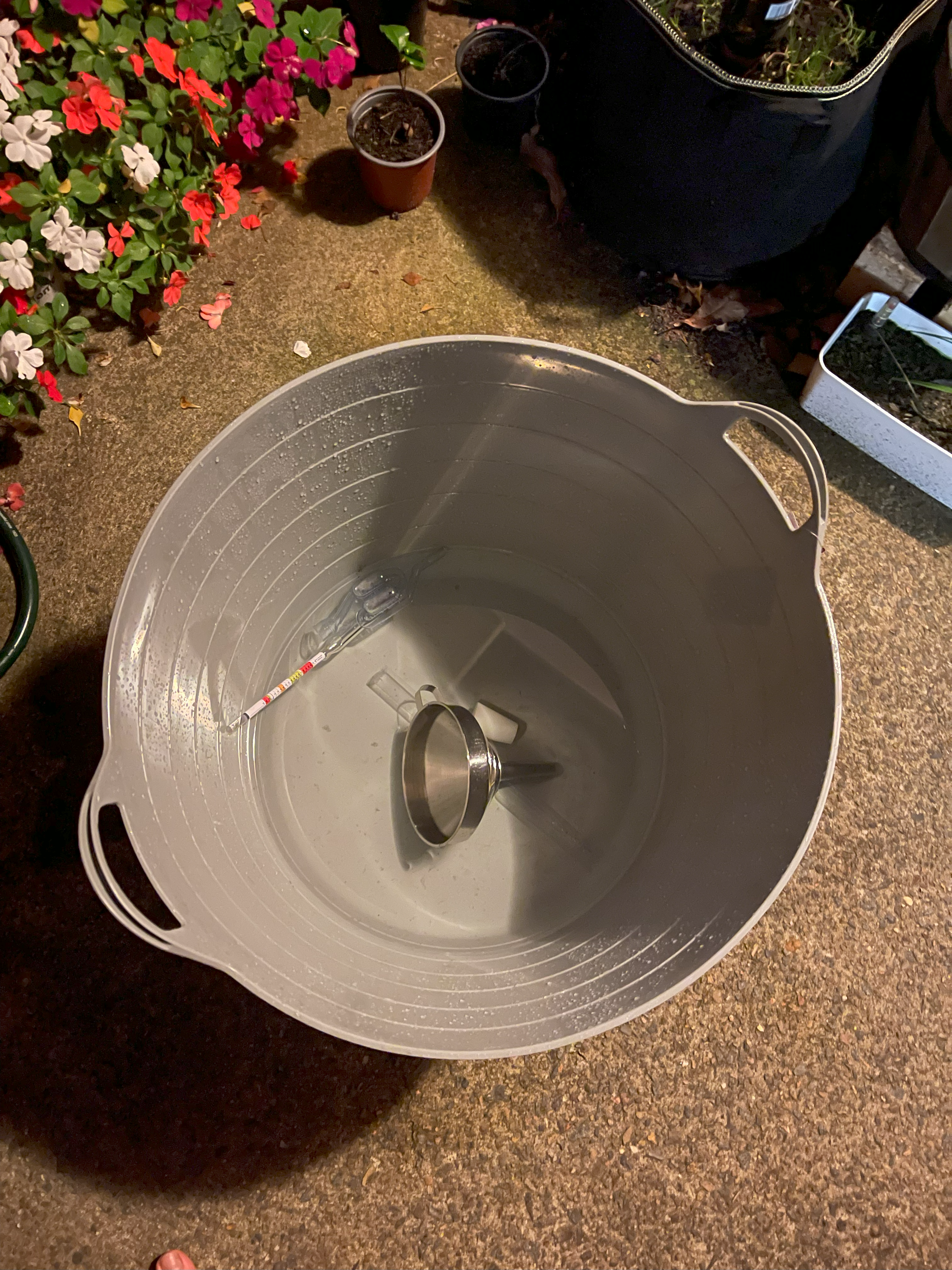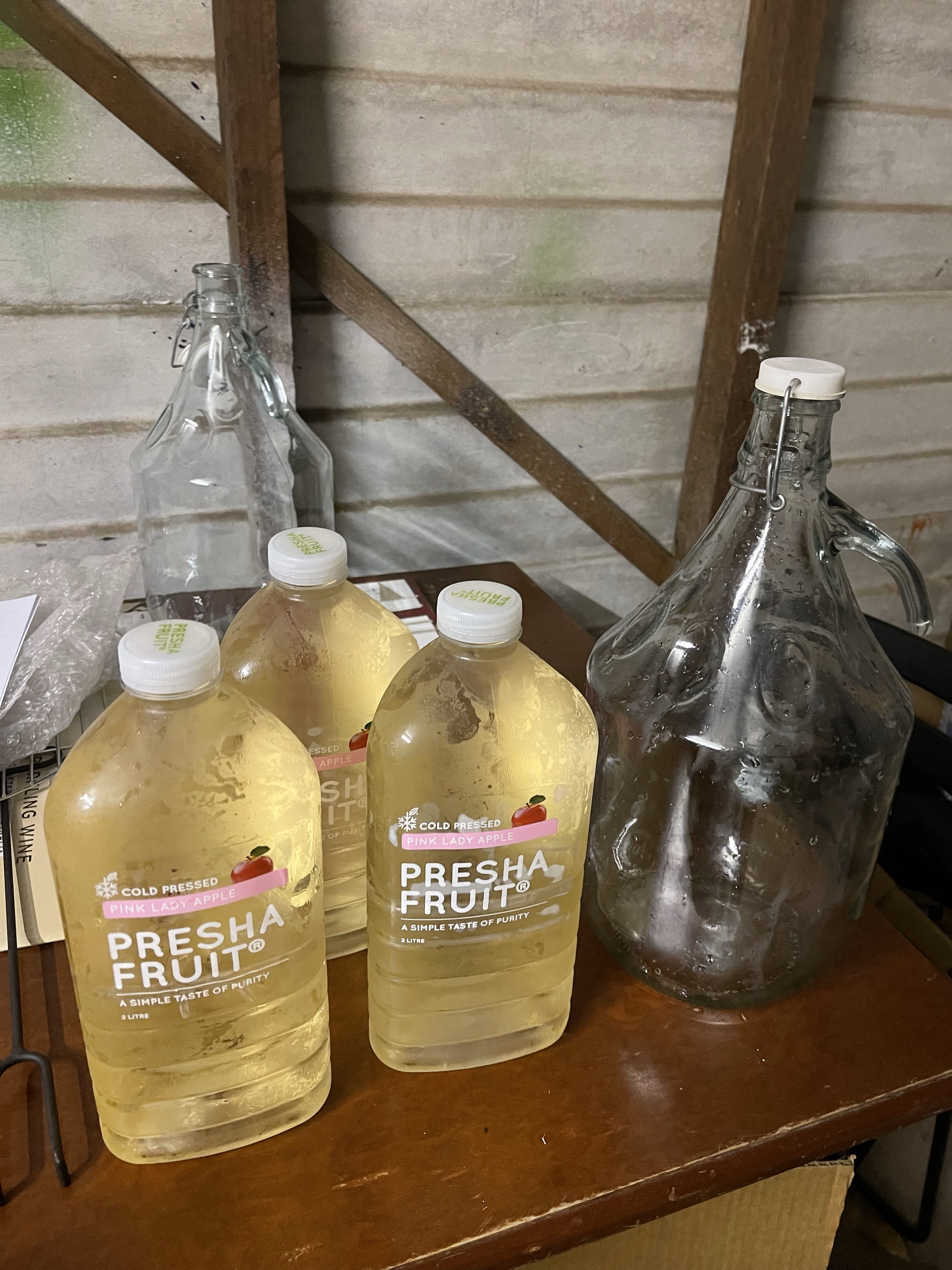Welcome fellow cider enthusiasts! Today, I’m excited to share my recent adventure in home cider-making, where I transformed store-bought Pink Lady apple juice into a refreshing and dry cider. This journey was not only a delightful foray into the world of fermentation but also a testament to the fact that great cider can come from humble beginnings.
It all started with a simple purchase – 6 liters of Presha Fruit Pink Lady apple juice, packaged in three 2L bottles, all for $24.00. The choice of Pink Lady apple juice was crucial. Known for its crisp and slightly sweet flavor, it provided the perfect base for my cider-making experiment.
Sanitisation: A Key Step:
Before diving into the fermentation process, I meticulously sanitised my equipment. This step is crucial in cider-making as it ensures that only the desired yeast strains contribute to the fermentation process, keeping unwanted microbes at bay.

The Fermentation Process
I poured 5 liters of the apple juice into my sanitised fermenter. The aroma of fresh Pink Lady apples filled the air, setting the stage for what was to come. To kickstart the fermentation, I added 5 grams of SafCider Yeast AB-1, a choice that promised a clean and efficient fermentation.

Monitoring the Progress:
The magic of fermentation began with a Starting Gravity of 1.050. Over the days, I watched the yeast work its wonders, eagerly anticipating the transformation. The final gravity rested at 1.004, indicating that most of the sugars had been converted into alcohol over the course of 4 days of fermentation. This resulted in a cider with approximately 6% ABV – a good level for a dry and refreshing drink.


The Outcome:
The result was nothing short of delightful. The Pink Lady apple juice had transformed into a dry cider that retained the subtle nuances of the original fruit. Each sip was a perfect balance of crispness, limited sweetness, and the dry finish characteristic of a well-fermented cider.
Reflection:
This experience was a testament to the fact that quality cider can be made from store-bought apple juice. It’s an approachable method for beginners and a fun experiment for seasoned cider-makers. The Pink Lady apple juice, with its inherent quality, combined with the right yeast, can yield a product that stands proudly alongside traditionally made ciders.
Conclusion:
I hope this journey inspires you to try your hand at home cider-making. It’s a rewarding process that not only teaches patience and precision but also offers the delightful reward of a glass of homemade cider. So, grab some apple juice, sanitize your equipment, and start fermenting. Cheers to the joys of home cider-making!